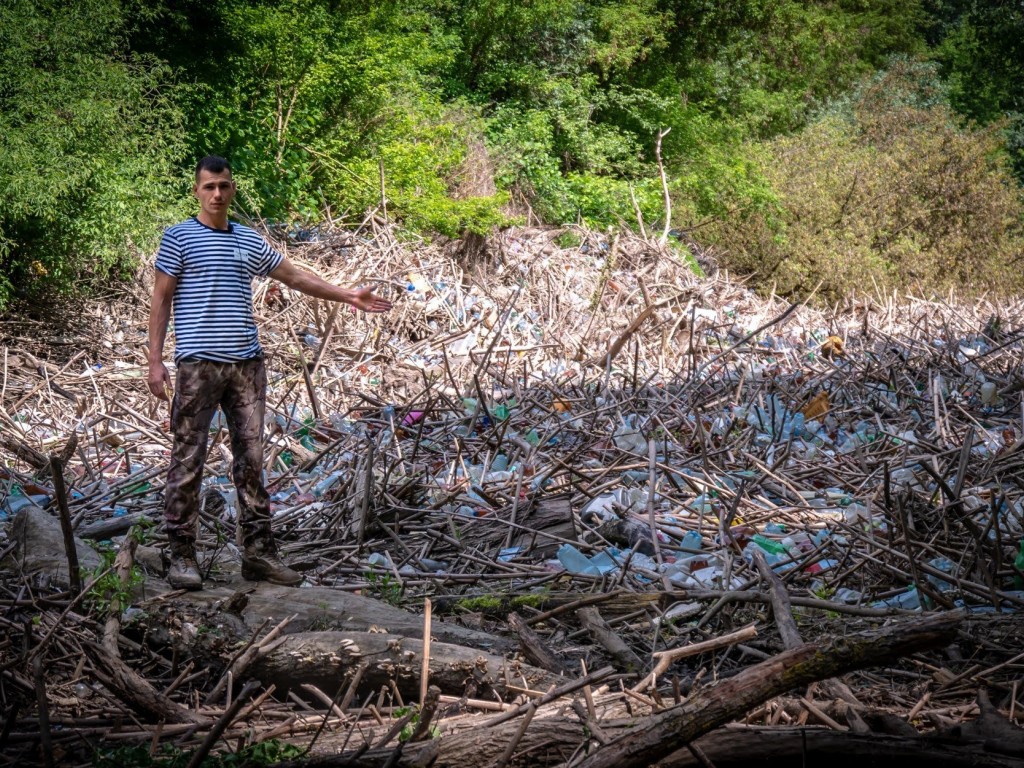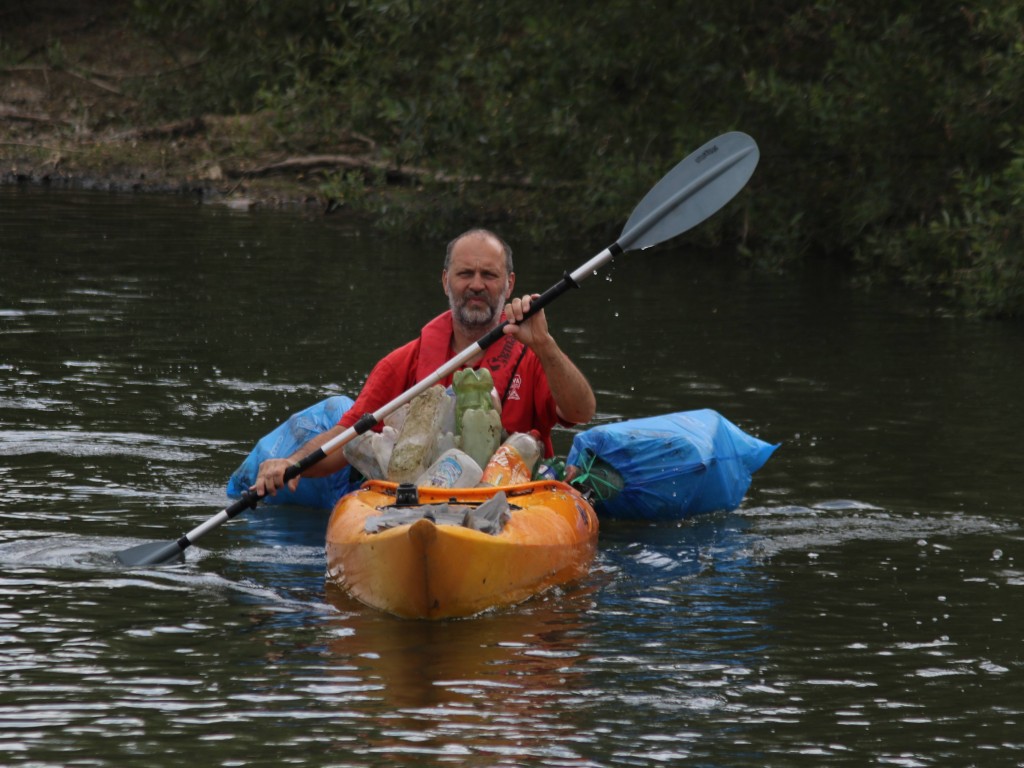Tid(y)Up - Not a drill: international river cleanup actions across the Danube basin
02-06-2022
There are many things that make a river cleanup worthwhile. The fun and teambuilding factor is definitely there, just like awareness raising and the joy of a cleaner riverbank. In the Tid(y)Up project however, project partners from 7 countries take things much further than that. In these joint pilot actions carried out in the framework of the project, the Transnational River Cleanup Handguide protocol was tested for the first time, on international waters.

MULTISALVA - a special rescue team from Romania secured all international river cleanup events, here in Tutrakan, Bulgaria (photo: IO-BAS)
This was definitely not a drill. In a series of real-life events, Tid(y)Up partners adopted best river cleanup practices developed by their lead partner (THU, Plastic Cup iniatiative) so to adopt and further develope it to their own needs. The adventure began in June, 2021 on the Tisza Lake - a pristine man-made wetland in Hungary - with the first joint cleanup in the project. Here the Hungarian plastic pirates (volunteers of the Plastic Cup, a river cleanup initiative launched in 2013) showed how they manage transnational river pollution waves. Their approach is unique not only in how they prepare and carry out cleanup interventions, but also in ways they further handle waste from the river.
- Selection is the key here, with enough care and a professional approach more than 60% of the collected riverine waste can be recycled - said Gergely Hankó, manager of Tid(y)Up partner HAEE and a waste manager expert at Plastic Cup. The special way of selection, developed in the last 10 years of Plastic Cup's history, was successfully adopted and applied in other project countries. The first country to take on the challenge was Slovakia, where, in 3 consequtive days, a large section of river Bodrog (tributary of Tisza) was cleaned. VIDEO
Serbia was the next to step in line. The UNS team from Novi Sad did a careful survey in areas affected by transnational river plastic pollution on the Lower Tisza and found some heavily hit areas around the settlement Becej. In April, 2022 the river was in flood and huge plastic accumulations were drifting along the main streamline of the Tisza (VIDEO). Secured by the MULTISALVA rescue boats and kayaks, the canoes started the cleanup operation.
- In two days we cleaned the river between Petrovo Celo and Novi Becej. According to the river cleanup handguide we have put special efforts into selection - said cleanup coordinator Miodrag Zivancev, researcher at UNS, Novi Said - we also made sure that the separated fractions such as glass, all kinds of PET bottles and plastics, along with metal safely reach the local waste management facility for further processing.

Mr. Zivancev empties a plastic waterbottle, with volunteers at the selection table (photo: Csanád Ivánfi, Plastic Cup)
To carry out a river cleanup operation, especially to international standars, is very difficult. Regions, countries, waste management practices can vary a lot, not to mention the rivers themselves. Nowhere was this more obvious than in Tutrakan, Bulgaria. The massive riverbed and flow of the Lower Danube astonished even the most experienced plastic pirates. Still, plastic monitoring revealed considerable pollution deposits along the shores, so the Varna-based oceanographical research institute IO-BAS decided to launch their river cleanup action here. VIDEO
- We sticked to the Transnational River Cleanup protocol so step one was to invite a local NGO on board to make organization much easier. - commented Violin Stoyanov Raykov head of research at IO-BAS Bulgaria - We also did a great deal of preparation work, so local volunteers as well as respected decision makers, such as our minister of ecology, showed up and participated in the cleanup effort.

Borislav Sandov, Minister of Environment and Water of the government of Bulgaria at the pilot river cleanup action in Tutrakan, Bulgaria in May, 2022 (photo: IO-BAS)
In war-torn Ukraine, some activities of the Tid(y)Up project were suspended for the obvious (see. our report HERE). Others however, were carried out with an even bigger determination just like a cleanup intervention in Transcarpathia. The Latorica river is functioning as a conveyor belt for pollution towards the Tisza, then to the Danube river. Not this time. In May, 2022 Tid(y)Up partner PAPILIO Society from Ukraine located a massive plastic jam on the river and invited local volunteers to clean it up. Reinforced with boats and heavy duty machinery, the team removed approximately 3 tons of plastic from the waterway. VIDEO.

Walking on the water. Roland Balogh, member of Tid(y)Up partner Papilio Society at a huge riverine waste jam on the river Latorica in Transcarpathia, Ukraine in May, 2022 (photo: Papilio Society)
Safety is one of the top concern of all cleanup actions. No matter if they clean the river on the shores or on the water, every participant has to be given proper safety instruction and maintain full alert mode during the entire operation. In case of an emergency, professional help must be nearby. During the Tid(y)Up pilot actions, MULTISALVA (Romania) provided this support from their kayaks and specially equipped speedboats. On top of securing events across the Danube basin, MULTISALVA organized several cleanup actions of their own in Romania, on rivers like the Túr, the Bega and also on the Romanian Danube. VIDEO.

MULTISALVA chairman Szabolcs Fülöp with a heavily loaded kayak on the river Túr, in May, 2022 (photo: MULTISALVA)
- In the last few months we have collected a tremendous amount of valuable experiences and knowledge on how to carry out effective cleanup operations in different countries from Ukraine to Bulgaria - said Attila David Molnár, chairman of lead partner Tid(y)Up. The good news is, that this extra know-how will be added to the Transnational River Cleanup Handguide, an important output of this project. Coming soon!
written by Anna Istenes, Gergely Hankó and Attila D. Molnár
#dtptidyup #interregtidyup
